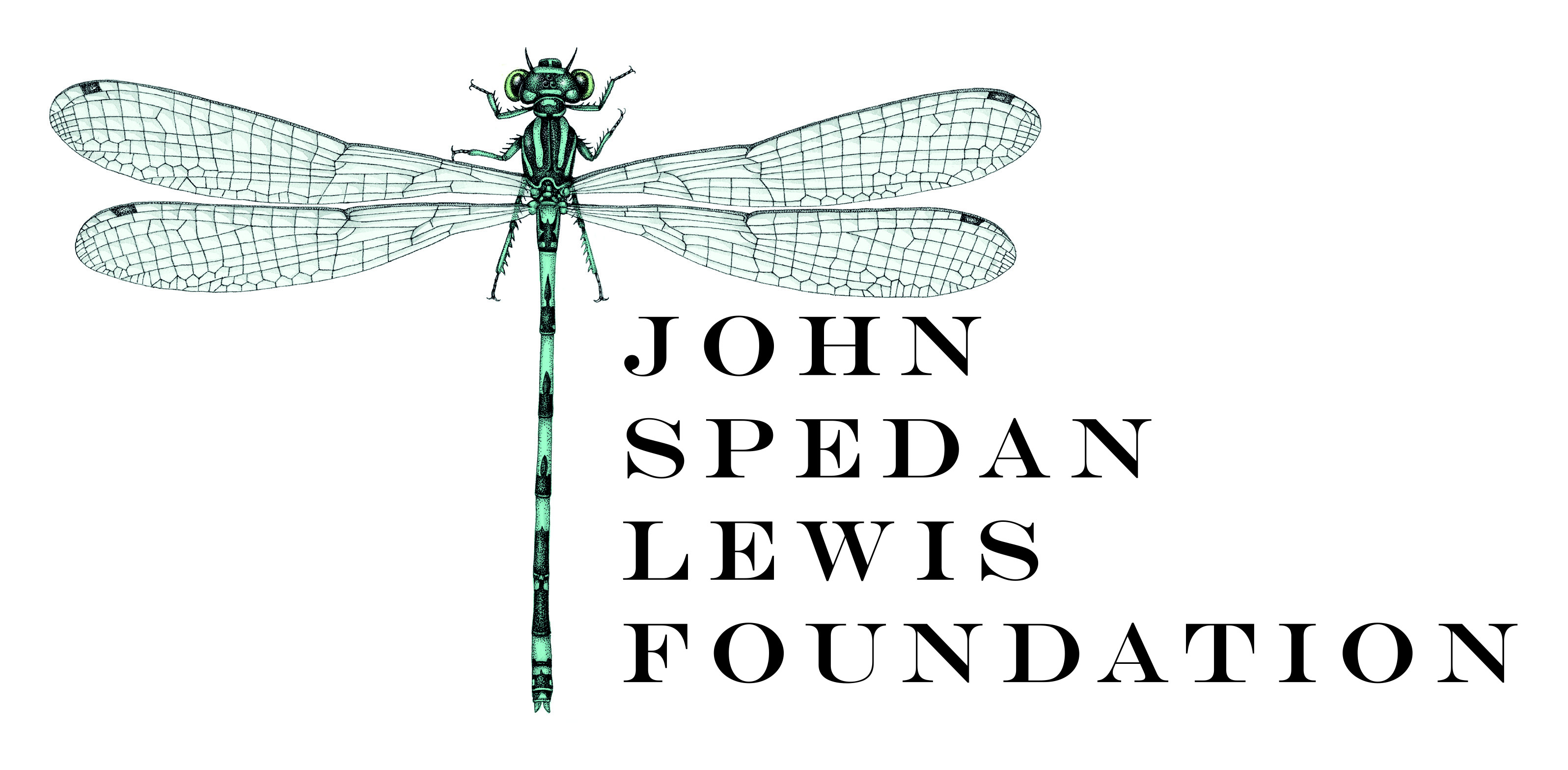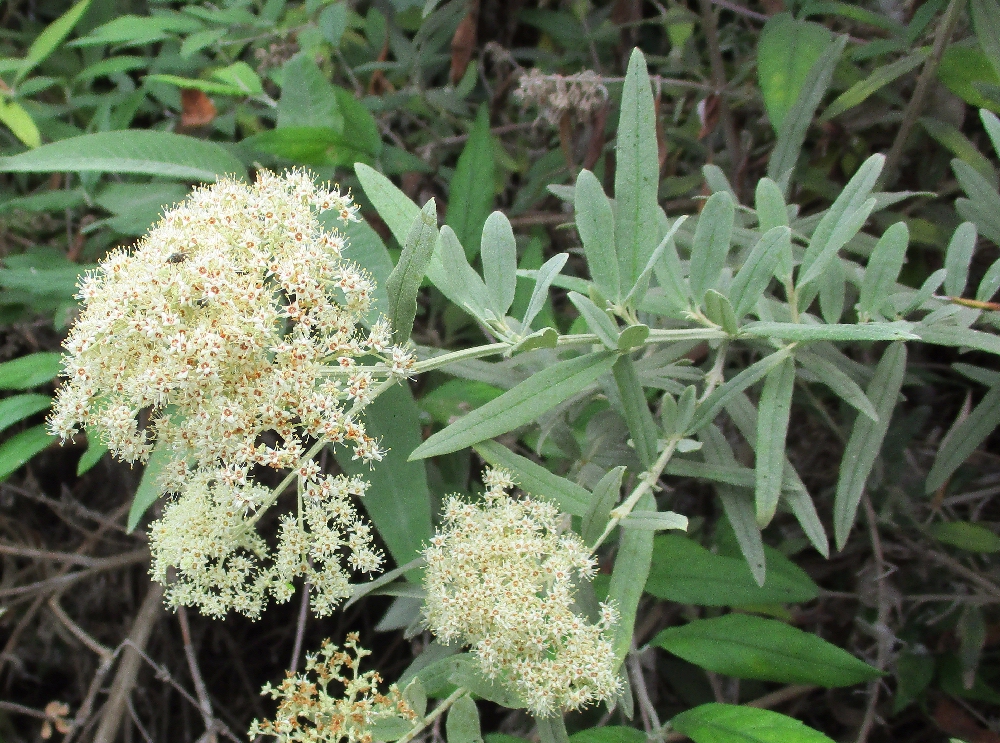Buddleja saligna
Sponsor
Kindly sponsored by
The John Spedan Lewis Foundation

Credits
Andrew Large (2021)
Recommended citation
Large, A.T. (2021), 'Buddleja saligna' from the website Trees and Shrubs Online (treesandshrubsonline.
Genus
Common Names
- Bastard Olive
- False Olive
- Basterolienhout
Synonyms
- Buddleja salicifolia Jacq.
- Callicarpa paniculata Lam.
- Chilianthus arboreus (L.f.), Benth.
- Chilianthus arboreus var. rosmarinaceus O. Kuntze
- Chilianthus oleaceus Burchell
- Nuxia saligna (Willd.) Benth.
- Semnos paniculata (Lam.) Rafinesque
- Scoparia arborea L.
Other taxa in genus
- Buddleja albiflora
- Buddleja alternifolia
- Buddleja araucana
- Buddleja asiatica
- Buddleja auriculata
- Buddleja caryopteridifolia
- Buddleja colvilei
- Buddleja cordata
- Buddleja crispa
- Buddleja crispa × lindleyana
- Buddleja curviflora
- Buddleja davidii
- Buddleja delavayi
- Buddleja fallowiana
- Buddleja fallowiana × davidii
- Buddleja FLUTTERBY™ Series
- Buddleja forrestii
- Buddleja globosa
- Buddleja glomerata
- Buddleja japonica
- Buddleja lindleyana
- Buddleja LO AND BEHOLD® Series
- Buddleja longiflora
- Buddleja loricata
- Buddleja × luteolufaucia
- Buddleja macrostachya
- Buddleja marrubiifolia
- Buddleja megalocephala
- Buddleja 'Miss Ruby'
- Buddleja 'Morning Mist'
- Buddleja myriantha
- Buddleja New Dwarf Hybrids
- Buddleja nivea
- Buddleja officinalis
- Buddleja 'Orange Sceptre'
- Buddleja paniculata
- Buddleja × pikei
- Buddleja 'Pink Delight'
- Buddleja 'Salmon Spheres'
- Buddleja salviifolia
- Buddleja 'Silver Frost'
- Buddleja speciosissima
- Buddleja 'Summer Beauty'
- Buddleja virgata
- Buddleja × wardii
- Buddleja × weyeriana
- Buddleja × weyeriana Hybrids
- Buddleja 'Winter Sun'
Shrub or small tree, 1–12 m; much-branched bushy habit. Branchlets terete or quadrangular with four narrow ridges or wings. Leaves evergreen, opposite and shortly petiolate, petiole glabrescent; leaf blade subcoriaceous, narrowly elliptic to linear, variable in size and shape 4–12 × as long as wide, 1.2–15 cm long; acute, accuminate or less often rounded at the apex; cuneate at the base or decurrent into the petiole. Upper surface lepidote-scaly, turning glabrous; underside much paler and densely grey- or tawny-pubescent with stellate hairs; venation reticulate and impressed above and prominent beneath. Inflorescence terminal and often also in axils of leaves; paniculate, large and many flowered. Flowers subsessile, in 3-flowered cymes and sweetly scented. Calyx often subtended by small linear bracts, outside densely lepidote-scaly. Corolla white or cream, with a short cup-shaped tube, 0.5–1.2 cm long, included in the calyx, outside glabrous, inside pilose; lobes 1.2–2.5 × as long as the corolla tube, suborbicular or elliptic, 1–1.8 × 0.8–1.2 mm. Stamens well exserted, filaments 1–2.5 mm long, inserted at or just below the mouth of corolla tube; anthers suborbicular, 0.3–0.4 mm long. Pistil densely lepidote-scaly all over, 1–2 mm long, ovary ovoid or nearly ovoid, sometimes laterally compressed abruptly narrowed to the style; style with capitate stigma about as long as the ovary. Capsule oblong, often laterally compressed, sparely lepidote-scaly. Seeds brown, tetrahedral or nearly fusiform, obscurely winged or unwinged and minutely reticulate. (Leeuwenberg 1979).
Distribution Lesotho South Africa Eastern Cape, Free State, Gauteng, KwaZulu-Natal, Limpopo, Mpumalanga, Northern Cape, North West, Western Cape Zimbabwe
Habitat Slopes of high mountains, 1600–2700 m, among boulders along water courses and in damp gullies; dry hillsides, mixed scrub and forest margins.
USDA Hardiness Zone 8-9
RHS Hardiness Rating H4
Conservation status Least concern (LC)
Buddleja saligna is one of several South African Buddleias previously classified as belonging to the genus Chilianthus; these species are unusual in having the anthers on long filaments that are exserted fully from the corolla, giving the flowers their distinctive fluffy appearance (Leeuwenberg 1979). The common name of False Olive refers to the foliage, which is evergreen and resembles that of the true olive tree (Olea); the latin epithet saligna means willow-like, similarly making reference to the shape of the foliage. B. saligna will grow into a small tree up to 15 metres high in its native habitat, the trunk reaching up to 40 cm in diameter, with deeply fissured and peeling bark. Specimens in gardens may be kept to smaller, shrub-like proportions by regular pruning. The inflorescences appear in summer and are in large panicles at the ends of the new wood. The flowers are off-white, sometimes with a reddish or golden centre, and pleasantly scented (Stuart 2006).
The species occupies a range of habitats in its native range and is amenable to different climates, being both frost and drought tolerant (Stuart 2006). It is sufficiently hardy when mature to grow in temperate regions, but needs a free-draining soil, some shelter from the harshest winds, and plenty of sun.

